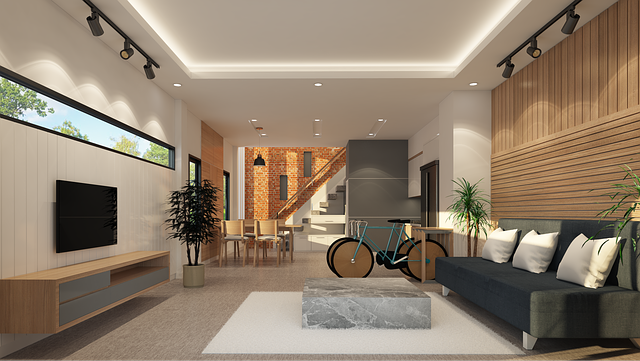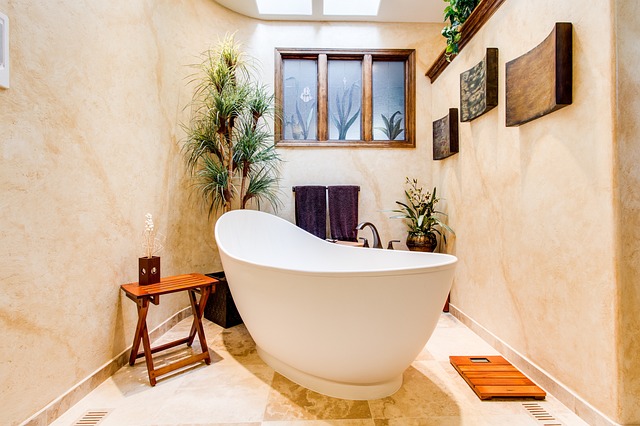Revolutionary Benefits of 3D Modeling Unleashed

In the realm of design and visualization, 3D modeling has emerged as a game-changer, offering unparalleled benefits for designers, architects, and clients. This article explores the transformative power of 3D modeling, delving into its ability to enhance visualization, streamline construction processes, and improve overall project efficiency.
By harnessing the potential of 3D modeling, designers can unlock a new realm of possibilities, delivering exceptional results that surpass expectations. Join us as we uncover the revolutionary benefits of 3D modeling unleashed.
Key Takeaways
- Easier visualization of interior environments in 3D compared to 2D plans
- Stimulates better questions and discussions during meetings
- Helps builders understand design intent and reduces misunderstandings during construction
- Enhances the designer’s process of discovery and increases client satisfaction
Enhanced Visualization and Design Approval
Enhanced visualization and design approval are crucial elements in leveraging the benefits of 3D modeling for interior design, as they allow designers to present realistic and visually appealing renderings of interior spaces to clients for informed decision-making.
With 3D modeling, designers can create detailed and accurate representations of their design concepts, bringing them to life in a way that 2D plans cannot. This enables clients to better understand the proposed design, visualize the flow and movement within the space, and make informed decisions about their project.
By providing a three-dimensional view of the design, 3D modeling enhances the client’s understanding and approval process, reducing the need for design revisions and ensuring client satisfaction. The realistic renderings produced through 3D modeling also contribute to the creation of visually appealing and captivating interior spaces.
Impact on Meetings and Decision Making
Effectively utilizing 3D modeling in meetings and decision-making processes significantly improves collaboration and fosters informed discussions. By presenting designs and concepts in a three-dimensional format, 3D modeling allows participants to visualize and understand the proposed ideas more comprehensively. This enhanced visualization stimulates better questions and discussions during meetings, leading to more informed decision-making.
Additionally, 3D modeling helps identify areas of concern or potential modifications, reducing tangential topics and saving valuable meeting time. The use of 3D models also enhances the overall meeting experience for clients, as they can better grasp the design intent and provide confident approval.
Ultimately, incorporating 3D modeling in meetings and decision-making processes improves efficiency, accuracy, and overall project outcomes.
Role in Building Construction
The utilization of 3D modeling in building construction improves communication between designers and builders, ensuring projects are constructed accurately and efficiently. By creating detailed 3D models, designers are able to convey their design intent more effectively, allowing builders to better understand the project requirements. This reduces the possibility of misunderstandings during construction and increases the likelihood of getting the project built correctly the first time.

Additionally, 3D modeling enhances the accuracy of construction documents, minimizing errors and misinterpretations. By providing a clear visual representation of the final design, 3D modeling ensures that projects are built well, on time, and within budget.
Overall, the integration of 3D modeling in building construction streamlines the construction process, improves project quality, and enhances the collaboration between designers and builders.
Efficiency and Accuracy in Construction Documents
Improving efficiency and accuracy in construction documents requires careful attention to detail and thorough collaboration between all stakeholders. One way to achieve this is through the use of 3D modeling in construction documents.
3D sketches and drawings provide a clear visual representation of the final design, highlighting areas prone to misunderstanding and minimizing errors during construction. By incorporating 3D modeling, communication between designers and builders is improved, leading to enhanced accuracy in construction documents. This ultimately ensures that projects are built well, on time, and within budget.
Additionally, 3D modeling reduces the need for design revisions, as it allows for better visualization and understanding of the design. Overall, the use of 3D modeling in construction documents greatly enhances efficiency and accuracy in the construction process.
Overall Benefits in Interior Design
By incorporating 3D modeling, designers can seamlessly integrate different elements and materials, resulting in a cohesive and visually stunning interior design. This innovative approach allows designers to create accurate and realistic renderings of interior spaces, enhancing the overall design process.
With 3D modeling, clients can easily visualize the proposed design and gain a better understanding of how the final space will look and feel. This not only increases client satisfaction but also facilitates informed and confident approval processes.
Additionally, 3D modeling reduces the need for design revisions, saving time and resources. By providing a clear visual representation of the final design, 3D modeling enhances communication between designers and builders, ensuring that projects are built well, on time, and within budget.
Overall, the benefits of 3D modeling in interior design are revolutionary and have a significant impact on the industry.
Streamlined Communication and Collaboration
A key aspect of achieving streamlined communication and collaboration is ensuring that all team members have access to the necessary tools and resources. In today’s fast-paced work environment, effective communication and collaboration are essential for the success of any project.

By providing team members with the right tools and resources, such as project management software, communication platforms, and shared document repositories, it becomes easier for them to collaborate, share ideas, and work together towards a common goal.
This streamlined communication not only improves efficiency but also reduces the risk of miscommunication and delays. Additionally, having access to the right resources, such as relevant data, research materials, and expert advice, empowers team members to make informed decisions and contribute effectively to the project. Overall, ensuring that all team members have access to the necessary tools and resources is a crucial step towards achieving streamlined communication and collaboration.
Time and Cost Savings
Maximizing time and cost savings, utilizing efficient project management strategies, and leveraging advanced technology are essential for successful project execution. In today’s competitive business environment, organizations are constantly seeking ways to streamline their processes and reduce expenses.
One effective method is through the use of 3D modeling. By implementing this technology, companies can visualize and simulate their projects, allowing for better decision-making and improved communication between all stakeholders. 3D modeling also helps reduce the possibility of errors and misunderstandings during construction, ensuring projects are completed correctly and on time.
Additionally, the use of advanced technology in project management allows for increased efficiency, saving valuable time and resources.
Competitive Edge and Innovation
In today’s competitive business landscape, organizations can gain a competitive edge and drive innovation by embracing advanced technologies such as 3D modeling. One of the key benefits of 3D modeling is its ability to enhance visualization and design approval processes. By allowing easier visualization of interior environments and simulating flow and movement within a space, 3D modeling enables clients to better understand and approve designs.
Additionally, 3D modeling facilitates more efficient and accurate meetings and decision-making processes. It stimulates better questions and discussions, reduces tangential topics, and improves the overall meeting experience for clients.
Furthermore, 3D modeling plays a crucial role in building construction, helping builders understand design intent, reducing misunderstandings, and improving project quality, timeliness, and budget adherence. Overall, embracing 3D modeling can revolutionize business operations, leading to increased competitiveness and innovation.
Frequently Asked Questions
How Does 3D Modeling Enhance the Client’s Understanding and Approval of a Design?
3D modeling enhances the client’s understanding and approval of a design by providing a visual representation of the proposed space in three dimensions. This allows clients to better visualize and comprehend the design, leading to more informed and confident decision-making.
What Are Some Specific Ways That 3D Design Stimulates Better Questions and Discussions During Meetings?
3D design stimulates better questions and discussions during meetings by providing a clear visual representation of the design, facilitating confident decision-making, identifying areas of concern for modification, and enhancing the overall meeting experience for clients.

How Does 3D Modeling Help Builders Understand the Design Intent and Reduce Misunderstandings During Construction?
3D modeling helps builders understand design intent and reduces misunderstandings during construction by providing a clear visual representation of the final design, minimizing errors, improving communication, and ensuring projects are built correctly, on time, and within budget.
What Are Some Examples of Areas in Construction Documents That Can Be Highlighted and Clarified Through 3D Sketches?
Some examples of areas in construction documents that can be highlighted and clarified through 3D sketches include complex spatial arrangements, structural elements, material transitions, and intricate design details.
How Does 3D Modeling Contribute to the Overall Process of Discovery for Interior Designers?
3D modeling contributes to the overall process of discovery for interior designers by providing a realistic representation of design concepts. It allows designers to explore different options, visualize spaces, and make informed decisions, leading to enhanced creativity and innovation in their designs.
Conclusion
In conclusion, 3D modeling has revolutionized the world of design and visualization, offering unparalleled benefits in various aspects of decision making. Its ability to enhance visualization, streamline construction processes, and improve overall project efficiency has transformed the way designers approach their work.
With its accuracy and clarity, 3D modeling minimizes errors and misunderstandings, ensuring projects are executed with precision. By harnessing the potential of 3D modeling, designers can deliver exceptional results, gaining a competitive edge and driving innovation.

